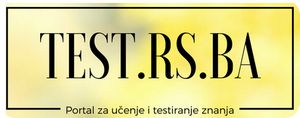
In CIO.com's latest Resume Makeover, executive career coach Donald Burns works with an IT professional who's won awards and worked for Fortune 500 companies, pharmaceutical businesses, and the government sector. The challenge: His resume was just a running list of the jobs he's held. The goal: make his most impressive skills stand out.
In a world full of noise, competition, and short attention spans, your resume has to say a lot, in many cases, at a glance.
It's the marketing tool for your personal brand and the first impression that hiring managers, recruiters, and HR reps get of you. Suffice it to say, getting it right is paramount to successfully compete against the horde of IT professionals out there.
Misspellings, unexplained employment gaps, or a simple list of past positions and responsibilities are all potential red flags that can make the decision-makers push your resume into the negative pile or make it go unnoticed completely.
Enter Arnold Stern
Meet Arnold Stern (not his real name). Stern has a long and successful career as an IT professional, an innovator and a problem-solver. He's won awards, worked for Fortune 500 companies, pharmaceutical companies and, most recently, was recruited into government IT as a problem solver to untangle some particularly complex issues. Stern was feeling the itch to again find a new challenge in the private sector and decided it was time to update his resume.
CIO.com heard the call and paired Stern with veteran and award-winning, executive career coach and strategist Donald Burns, who's also a returning guest to the makeover series. Burns initial thoughts: "I could tell in his case, this was something he did years ago and had just kept adding to it," says Burns, which is a common occurrence in his experience.
People build a resume five or 10 years in the past and then continue to add new positions to it. "It looked very bland and nothing stood out. I hoped there was something good in here and there was," says Burns.
Interview Process
The next step was to get Burns and Stern together for a conversation to nail down some important details. Burns notes that the interview is one of the most important parts of the process for him. Uncovering the story behind Stern's past positions, the reasons why an employer would want to hire him and where he wanted to go was what Burns was looking for. "Sometimes the most unsuspecting people have the best stories," says Burns, and that was the case with Stern.
Burns' IT Resume Strategy
Keep it like an ad. It needs to read fast with top highlights. All items should be short, one to three sentences at the most. The goal is to make it easy to read or scan. Five or 10 seconds is all it should take. Once it gets beyond three to five lines people may try to digest it, but will be more difficult, according to Burns.
Obstacles and Solutions
The first problem Burns found once he spoke with Stern, "He had all kinds of information that wasn't on here [old resume]," says Burns. Another reason he points out why the live conversation is critical to the process. "I do it as a simulation of an interview," says Burns. Speaking to Stern, he was able to unearth some impressive achievements in his career, some of which weren't included on his old resume at all and others that were buried in text. "Sometimes the best people somehow package themselves in a bad way and they fall through the cracks," says Burns.
Next issue: the wrong items were highlighted. "Sometimes people latch onto credentials. It's bad to bury your best material," says Burns. Knowing that there is a limited amount of space, Burns began the transformation by creating a menu of types that encompassed the items he would include in the new resume. Then he began the work of packaging those items in an interesting way that was both short and concise.
Tip: Once you have the content figured, you can start thinking about how to format it. Keep it short and concise between 1-3 sentences whenever possible.
Next, Burns took a closer examination of Sterns resume noting it was text-heavy and that nothing really stood out. "He had a lot of text on the old resume but it wasn't saying a lot... If you have something that looks like the small print on a phone bill no one is really going to read it," says Burns.
It's got to be compelling because it's the single document that represents you to potential employers. The most important part of the resume, according to Burns: "Headline and the text right under the headline. If the reader isn't sold, there won't be a connection." That said Burns took a more aggressive approach than the old resume by adding four bullets right in the fold.
Using information gleaned from their interview, he highlighted Stern's most impressive achievements and brought them to the forefront. These were items Burns thought a potential employer would take notice of. "You have to capture something memorable," says Burns. You're going up against a slew of other potentially qualified people and you have to make a statement that will help you stand apart.
Another issue that needed resolution was that there were items that were too old on his resume. Stern has had a long career in IT and was including items that were no longer relevant. Burns decided to limit Stern's positions and achievements to the last 15 years.
Tip: If it's older than 10 years you may need to really analyze if it speaks to the role you are shooting for. If you feel an older position is really important and would like to include it, do so in the summary and now where else.
With the heavy lifting done, Burns turned over the updated to resume to Stern, who was most appreciative. Stern's reaction: "It's the same information delivered differently. Mine [old resume] was just an accumulation of experiences over times. This is one brings my best experiences to the front," says Stern.
When asked what his overall impression of the finished product, "Absolutely excellent," says Stern.
Final IT Resume Tip
A resume is designed to do one thing--get your foot in the door. "It's important that somebody can eyeball it in five seconds, that the headlines stand out and they can make a determination that this is good. That will lead to an interview, which is the real job of the resume. If you look at Stern's new resume for five seconds you'll see a lot of accomplishments there. An employer would be implored to interview him," says Burns.
Are you a senior IT professional who'd like to participate in the resume makeover series? If yes, please drop the author an email with resume makeover 2013 in the subject.
Please note that we get many submissions and we cannot include everyone.
Rich Hein is a senior writer for CIO.com. He covers IT careers. Follow everything from CIO.com on Twitter @CIOonline, on Facebook.
NOTE: I you would like to PROMOTE link in this article, please let me know.
If you liked this article, please like DM Spot FB page, Twitter or LinkedIn and be notified when a new article is published.







